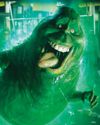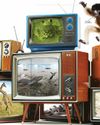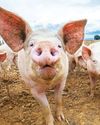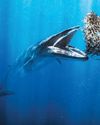
Horses roamed the world long before humans did. Today, most people tend to think of them as domesticated (tamed by humans) – grazing in fenced fields and sheltering in stables. However, millions of horses and ponies still roam freely in the wild. They can be spotted galloping across the grasslands of central Asia and kicking up dust in the Australian outback. They huddle in herds on English moorlands and gather around watering holes in Africa’s Namib Desert. They charge across the North American prairie and hide among island forests in the middle of the Baltic Sea. How did these herds get there? How do they survive? Are they truly wild, or are they descended from domestic steeds that bucked the trend for living alongside people? To find out, let’s trot back in time and trace the history of both horses and humans.
The first horses
Horses arose in the forests of North America around 50 million years ago. For millions of years, dozens of different types lived alongside each other. Some were as small as today’s dogs, tiptoeing through the undergrowth as they nibbled leaves, fruits and shoots.
Others adapted to live outside the forest, grazing on North America’s vast grasslands, alongside woolly mammoths. These creatures developed unique digestive systems to graze on dry, tough grasses. They also needed long, powerful legs to escape from sabre-toothed cats and other prehistoric predators that prowled the prairie. They included the first animals in the group known as Equus – the ancestors of all today’s horses, donkeys and zebras.
This story is from the Issue 72 edition of The Week Junior Science+Nature UK.
Start your 7-day Magzter GOLD free trial to access thousands of curated premium stories, and 9,000+ magazines and newspapers.
Already a subscriber ? Sign In
This story is from the Issue 72 edition of The Week Junior Science+Nature UK.
Start your 7-day Magzter GOLD free trial to access thousands of curated premium stories, and 9,000+ magazines and newspapers.
Already a subscriber? Sign In

Camera Obscura
Imagine stepping inside a dark room, where the only source of light comes through one small hole in the wall.

MANCHESTER SCIENCE FESTIVAL
From 18-27 October, shoppers at the Arndale shopping centre in Manchester, England, will face a giant spider.

Should musicians stop touring?
Multiple concerts travelling around the world have a big impact on the environment.

Are ghosts real?
Plenty of people believe in ghosts, but it's hard to find proof.

SMASH STEREOTYPES
In an extract from his prize-winning book, scientist and writer Adam Rutherford shows you how to use the power of science to fight racism. This chapter, titled Myth-Busting, is all about sport.

Animal awareness
What would it feel like to be another animal?

Hamza Yassin
Go behind the camera with a wildlife filmmaker.

WILDLIFE WATCH
Ben Hoare goes on a safari from his sofa to discover how nature documentaries are made.

Big bum breakthrough
A team of researchers who found out that mammals can breathe through their bottoms have won a prize at the lg Nobel awards.

A jaw-dropping undersea snap
A photograph of a Bryde's whale feeding on a heart-shaped \"bait ball\" of sardines has won the Ocean Photographer of the Year contest.